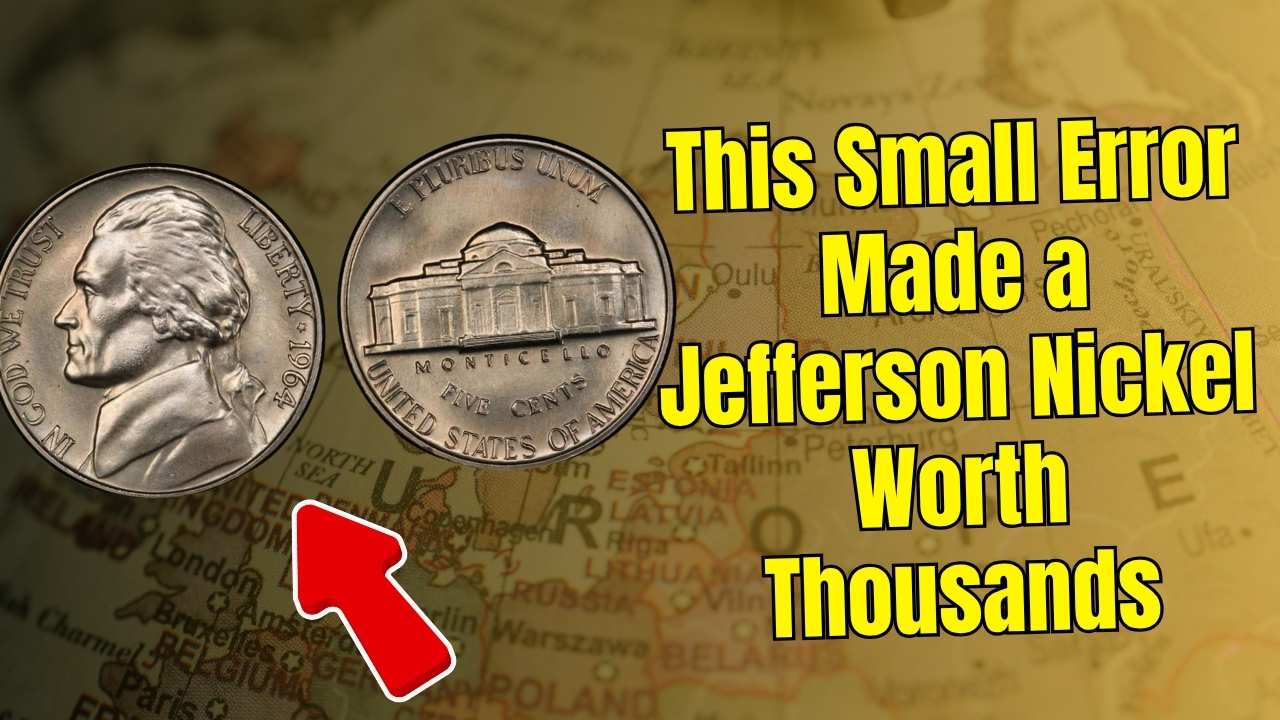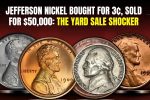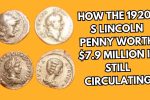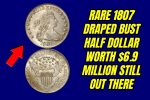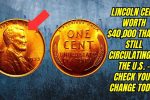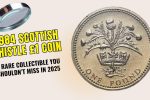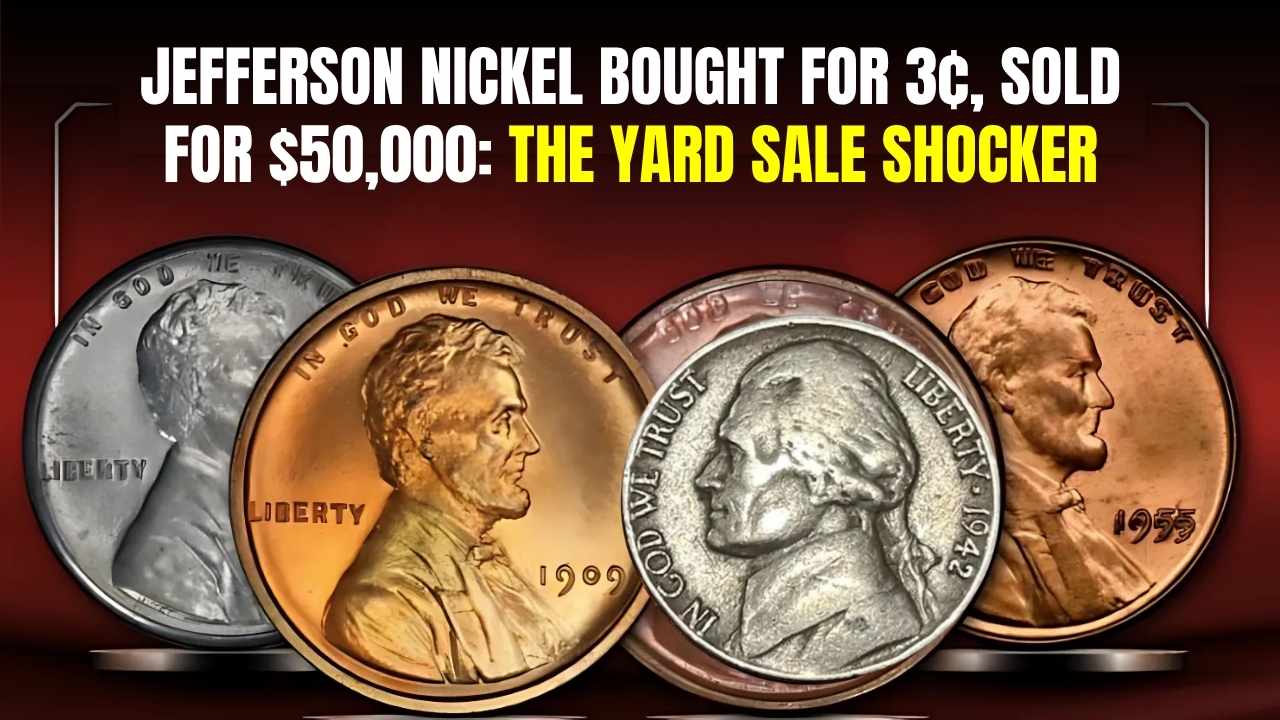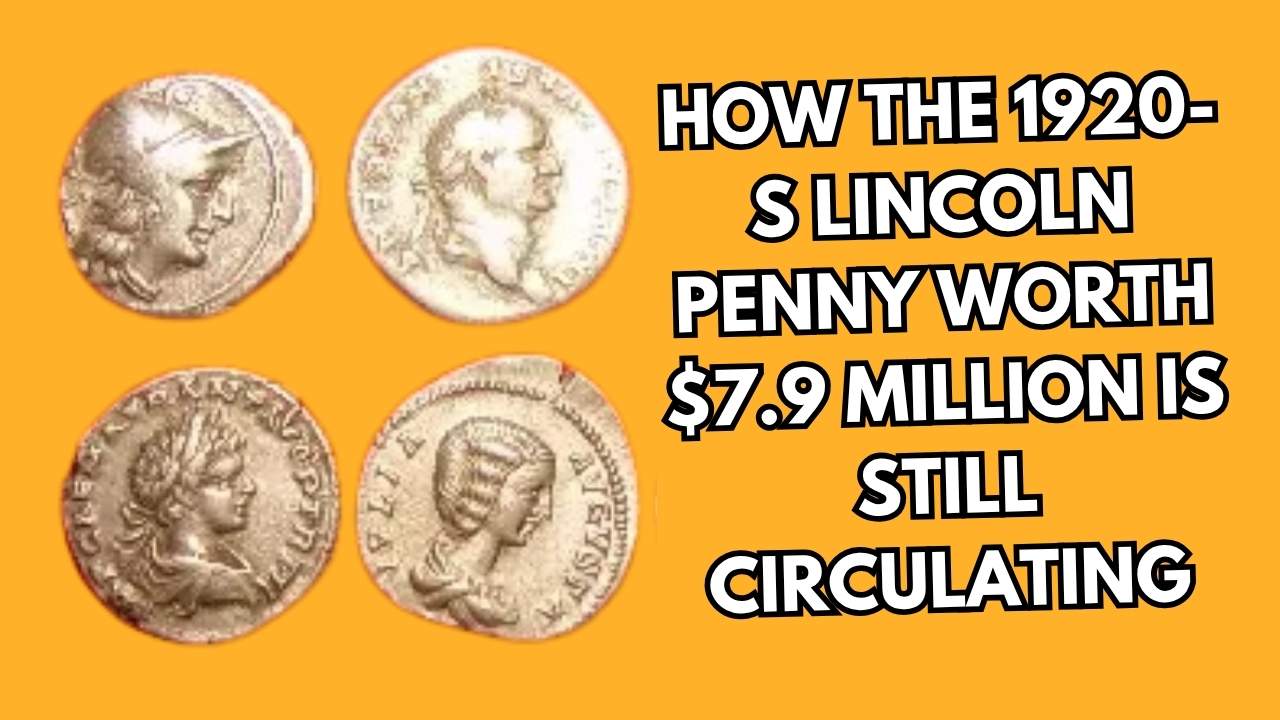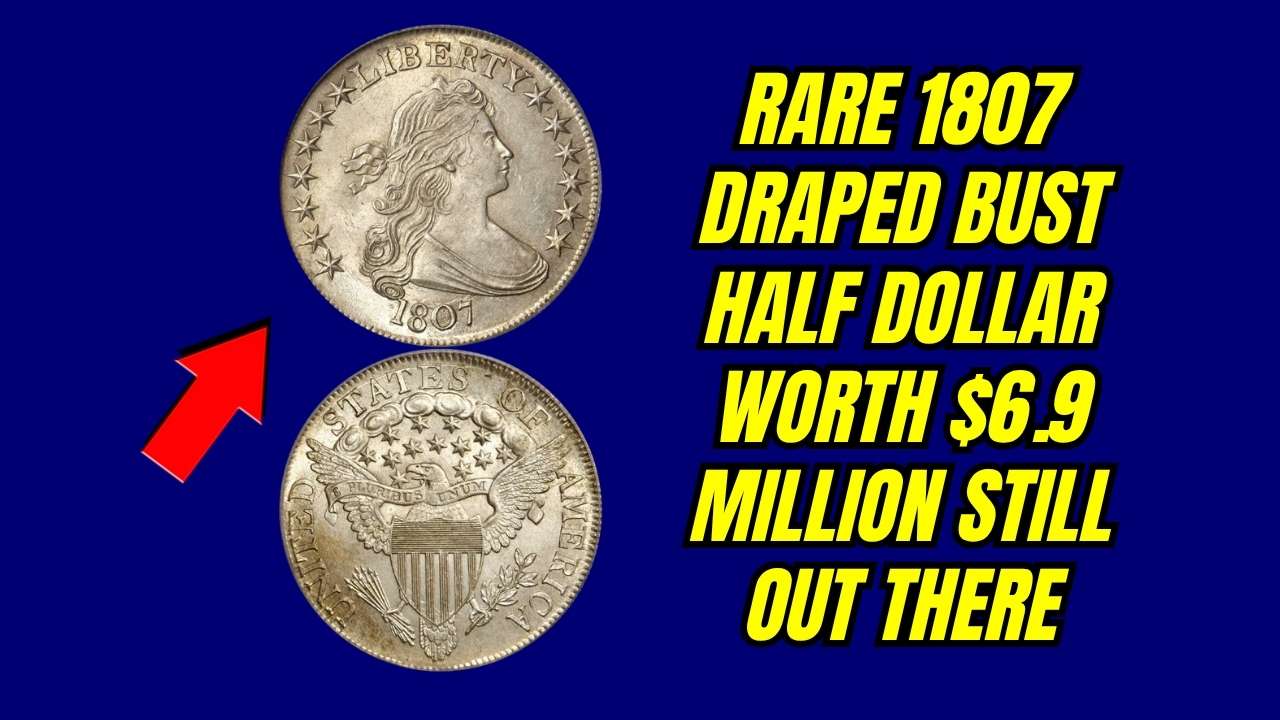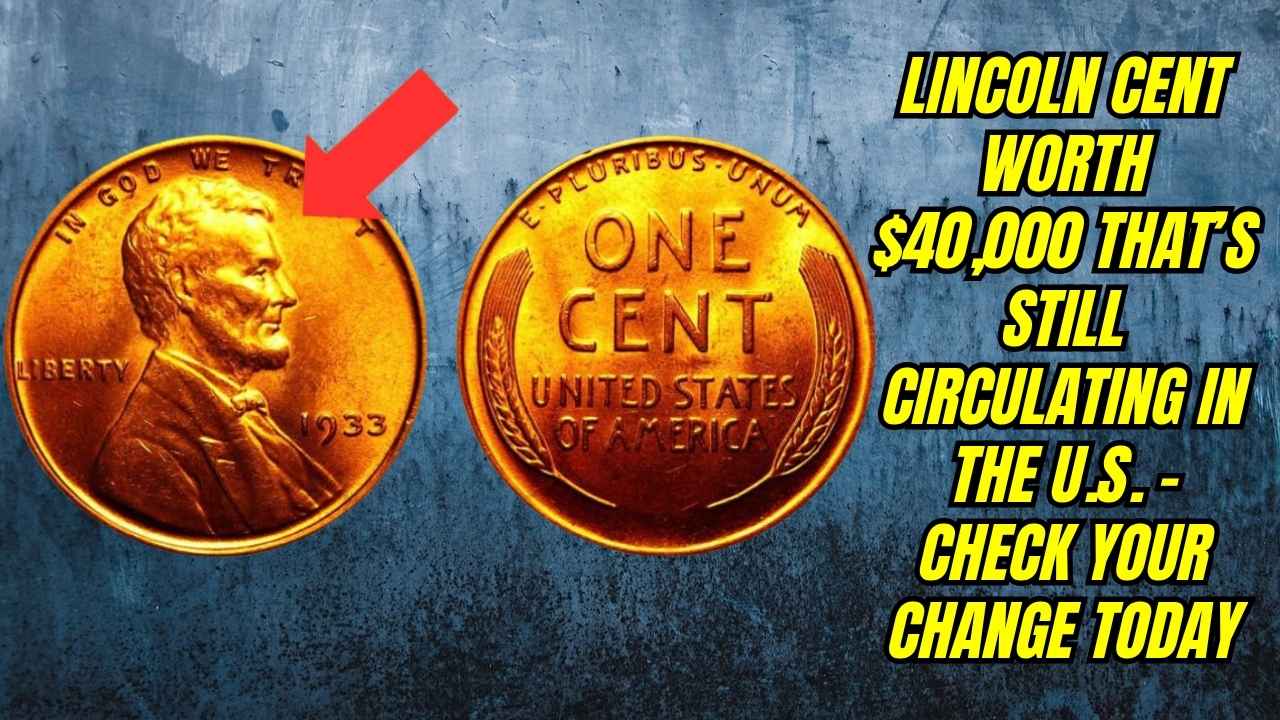Have you ever taken a closer look at the coins jingling in your pocket? While most of them are worth their face value, every now and then a coin can be worth much, much more. One such coin is the Jefferson nickel, which has gained fame not just for its historical design but for the surprising errors that can turn a five-cent piece into a small fortune.
This article explores how a simple mistake during the minting process can make a Jefferson nickel worth thousands. From doubled die errors to clipped planchets, these imperfections are highly valued in the world of coin collecting. You’ll learn how these errors occur, what to look for, and what makes these coins so desirable to collectors.
Jefferson Nickel
The Jefferson nickel, first introduced in 1938, may seem ordinary, but it’s one of the most exciting coins for collectors. Though most versions are common, a few contain unique minting mistakes that make them incredibly rare and valuable. From war-era compositions to striking errors, these small differences are enough to turn pocket change into a collector’s prize.
Overview Table
| Feature | Details |
| Coin Name | Jefferson Nickel |
| First Minted | 1938 |
| Designer | Felix Schlag |
| Common Reverse Design | Monticello (Jefferson’s Virginia home) |
| Known Valuable Error Types | Doubled die, off-center, missing mint mark, clipped planchet, wrong planchet |
| High-Value Examples | 1939 doubled die reverse, 1943-P Full Steps |
| Highest Reported Sale | Over $10,000 for pristine Full Steps or rare error types |
| Time Period for Wartime Nickels | 1942–1945 (silver composition, unique mint marks) |
A Common Coin with an Uncommon Twist
At first glance, the Jefferson nickel looks like just another coin. It features Thomas Jefferson on the front and Monticello on the back. But beyond this basic appearance, the Jefferson nickel has a long and rich history. It was introduced in 1938 to replace the Buffalo nickel and has remained in production ever since.
Millions are minted each year, yet some slip through with tiny, rare flaws. These mistakes—barely visible to the untrained eye—can be worth hundreds or even thousands of dollars. The key is knowing what to look for.
How Minting Errors Happen
Minting errors are surprisingly rare due to the highly precise machines used by the U.S. Mint. However, no system is perfect. Small malfunctions during the minting process can create coins with misprints, missing features, or incorrect metal blanks. These errors include:
- Dies striking the coin incorrectly
- Use of the wrong planchet (coin blank)
- Misaligned dies or machines
- Missing mint marks
- Incomplete or off-center designs
These flaws transform ordinary nickels into prized collector items because of their uniqueness and rarity.
Types of Jefferson Nickel Errors That Are Worth Big Money
1. Doubled Die Errors
One of the most recognized and valuable mistakes is the doubled die. This occurs when a coin is struck twice by the die, causing features like text or Jefferson’s profile to appear doubled. Depending on clarity and condition, a doubled die Jefferson nickel can fetch hundreds to thousands of dollars.
2. Off-Center Strikes
Coins that were not properly aligned during striking have off-center features. A Jefferson nickel with a 50% off-center strike is rare and can sell for $300 to over $1,000 based on its condition and how much of the design is visible.
3. Missing Mint Mark (1942–1945 Wartime Nickels)
During WWII, nickels were made with silver to save nickel for war production. These had prominent mint marks above Monticello. If one of these silver nickels is missing a mint mark, it’s a minting error and could be worth hundreds of dollars.
4. Clipped Planchet
If a nickel is struck on a planchet that wasn’t fully cut from the metal sheet, it may have a curved or missing edge. These clipped planchet errors are eye-catching and can be worth $100–$500 depending on the size of the clip and the coin’s condition.
5. Improper Alloy or Wrong Planchet
Occasionally, a Jefferson nickel is struck on a blank intended for another coin or with the wrong metal mixture. These errors can make the coin appear lighter, darker, or oddly colored. Some wrong-planchet nickels have sold for more than $5,000.
Real-Life Jackpot: A Simple Nickel Worth Thousands
These aren’t just theoretical cases. Real stories have surfaced about everyday people discovering valuable nickels in rolls from the bank or family coin jars. A Pennsylvania man once found a 1939 doubled die reverse Jefferson nickel that later sold for $3,450 at auction.
Another standout example is the 1943-P “Full Steps” nickel, which features fully visible and sharply defined steps on Monticello. In top condition, one of these rare coins sold for over $10,000.
What Makes These Coins So Valuable?
Not all error coins are created equal. The value of a Jefferson nickel with a minting mistake depends on several factors:
- Rarity: The fewer known examples, the higher the value.
- Condition: Mint or near-mint coins with minimal wear are the most valuable.
- Error Visibility: The more obvious and dramatic the error, the better.
- Demand: Coins that are popular with collectors sell for more.
Grading services like PCGS and NGC help determine value by professionally assessing a coin’s condition and authenticity.
How to Spot a Rare Jefferson Nickel
Think you might have a rare nickel? Here are quick tips for checking:
- Use a magnifying glass to examine details
- Look for doubling in the date or lettering
- Check for a missing mint mark (especially on 1942–1945 nickels)
- Inspect the coin’s edges for clipping
- Compare color and weight to other nickels for alloy or planchet errors
- Look at Monticello’s steps—if they are sharply visible and unbroken, the coin may be rare
Avoid cleaning the coin. Even gentle cleaning can reduce its value significantly.
What to Do If You Find One
If you discover a suspicious or unusual Jefferson nickel:
- Keep it safe in a coin flip or cloth pouch
- Minimize handling to protect the coin’s surface
- Have it graded by a certified grading service
- Research auction history to understand its potential value
- Consider selling through a reputable coin dealer or auction house
Why Coin Collecting is Making a Comeback
Coin collecting has regained popularity, especially with younger generations discovering the thrill of the hunt. Social media and online videos showing massive payouts for rare coins have inspired many to recheck their old jars and wallets.
The Jefferson nickel, thanks to its long production run and wide range of known errors, is now a favorite among collectors looking for affordable yet exciting finds.
Final Thoughts: The Fortune in Your Pocket
The next time you get a Jefferson nickel in change, give it a closer look. What appears to be just another coin might be a rare piece with a hidden error worth hundreds or even thousands of dollars. Coin collecting isn’t just a pastime—it’s a chance to uncover unexpected value in the everyday.
A small minting mistake could change your financial future. All it takes is one good eye and a little curiosity.
FAQs
What is a doubled die error on a Jefferson nickel?
It occurs when the coin is struck twice, resulting in a doubled appearance in parts of the design.
How can I tell if my Jefferson nickel is off-center?
An off-center nickel will have part of the design missing or pushed toward one edge.
What is a wartime nickel, and why is it valuable?
Minted from 1942 to 1945, wartime nickels contained silver. If one lacks the expected mint mark, it may be a rare error.
How can I tell if my Jefferson nickel has a clipped planchet?
Look for a curved or incomplete edge, which indicates a clipping error.
Should I clean my rare Jefferson nickel?
No. Cleaning can damage the surface and reduce the coin’s value.
